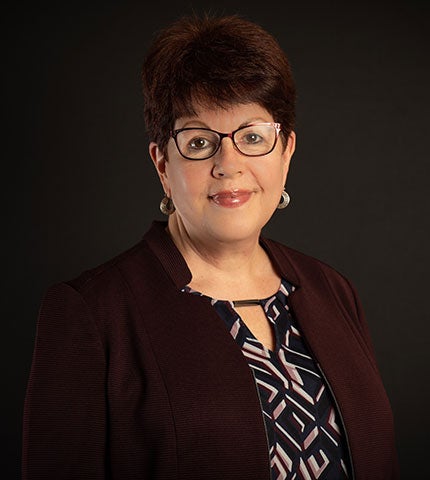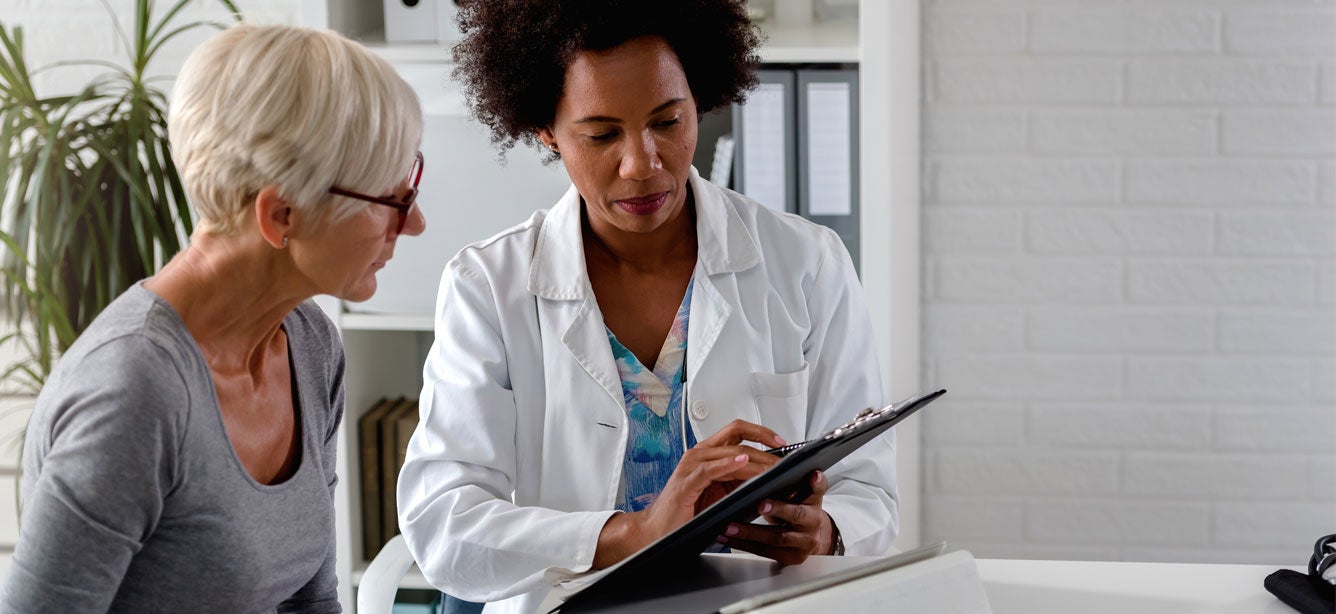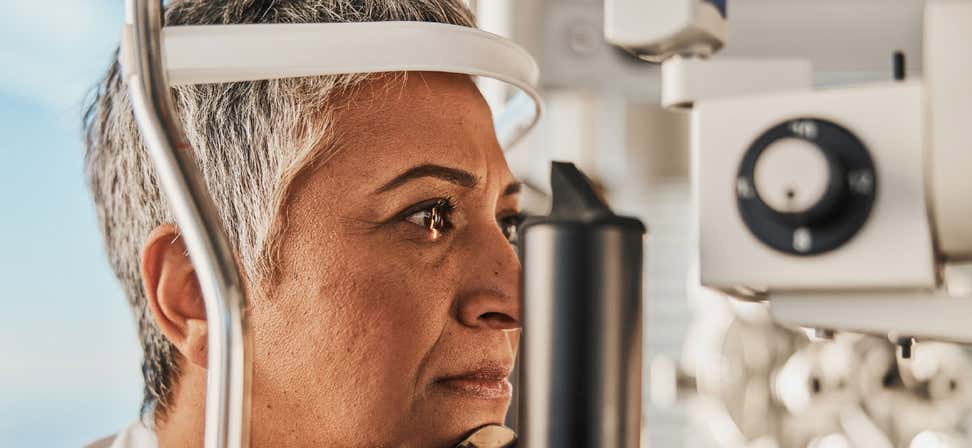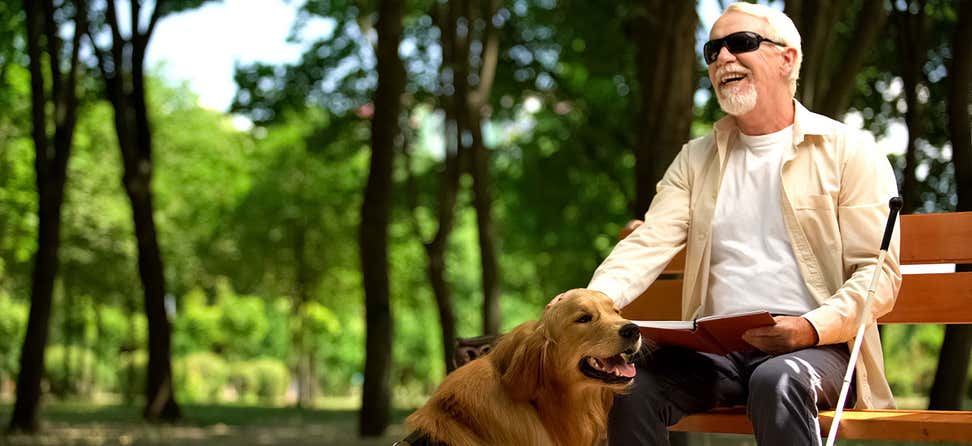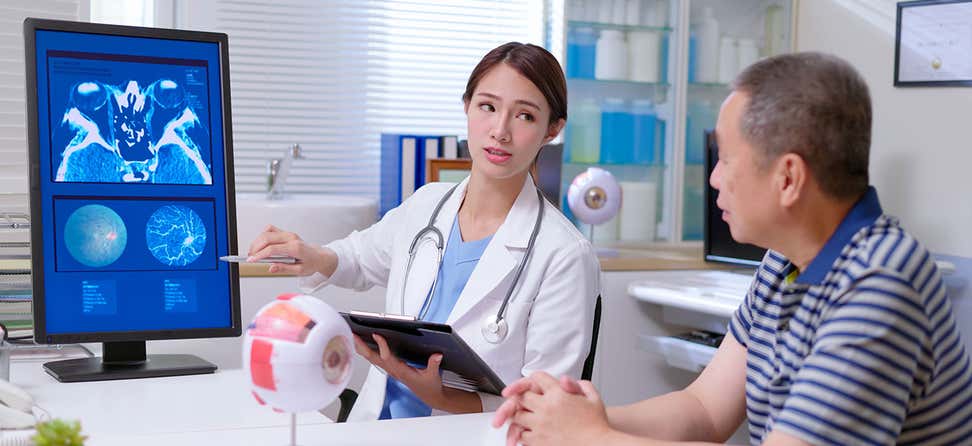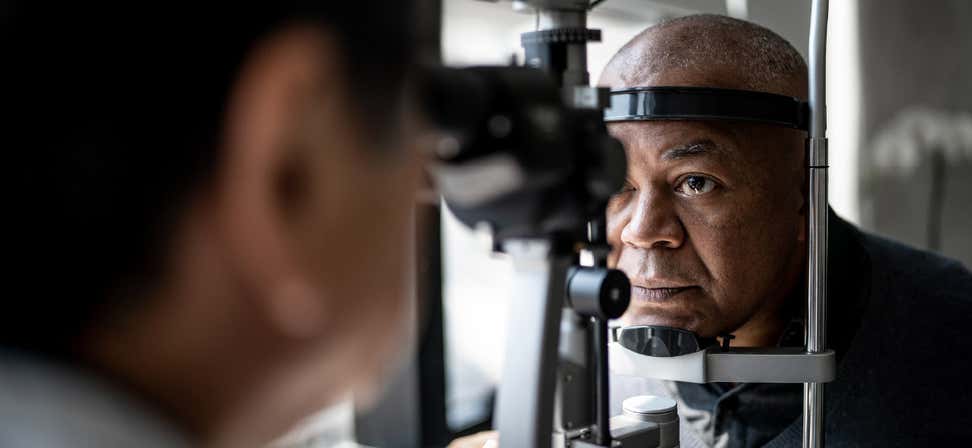Key Takeaways
Orientation and Mobility training is tailored for each person based on their level of vision loss, lifestyle, activities, and goals.
Orientation and Mobility training is a type of vision rehabilitation that can help improve quality of life and increase independence.
A local vision rehabilitation agency can connect people with blindness and low vision with Orientation and Mobility training.
Theresa, 66, lives in Manhattan and has been diagnosed with the eye conditions glaucoma and uveitis. Theresa’s vision fluctuates, and on a good day, she can recognize faces. But thanks to vision rehabilitation services, her decreased vision does not keep her from living a full life.
She received Orientation and Mobility training from a VISIONS certified Orientation and Mobility Specialist. Using a red and white cane, glare-resistant sunglasses, and a brimmed hat, she can now safely navigate walking and shopping in her neighborhood. She no longer has to depend on her family and friends.
"I am much more comfortable and independent in my home and community. VISIONS helped me to gain back much of the independence that I felt that I may have lost,” said Theresa, who regularly attends the VISIONS Center on Aging. "I am so happy I made new friends at the older adult center."
What is Orientation and Mobility training?
Orientation and Mobility (O&M) training—a specialized vision rehabilitation service—can make a big difference when it comes to safety, independence, and quality of life for adults with significant vision loss—including blindness and low vision.
Orientation and Mobility (O&M) involves training in key areas:
- Orientation: This helps people with blindness and low vision understand their environment—learning to use sounds, smell, texture, touch, and other sensory cues to interpret the environment, orient themselves, and mentally map their surroundings.
- Environmental and spatial awareness: Training provides a deeper understanding of various areas, spaces, and layouts, including home, office, other indoor spaces, and outdoor environments, including streets, sidewalks, street crossings, public transportation, buildings, stores, parks, and more.
- Mobility: Specialized training helps those with vision loss safely and efficiently navigate from one location to another. Training is provided in real-life settings and often includes specialized mobility aids, including a white cane. Once mobility training is completed, some people get a guide dog for added assistance and support.
- Assistive technology: A broad range of technology can enhance orientation and mobility training, including: GPS and navigation apps that provide auditory directions and location information via mobile device; Smartphone apps using your smart device camera to audibly (or use text to) describe objects in the environment; and electronic travel aid devices that use ultrasound or laser technology to detect obstacles and provide auditory feedback or vibration.
Orientation and Mobility training is tailored for each person based on their level of vision loss, lifestyle, activities, and goals.
Benefits of Orientation and Mobility training
Orientation and Mobility training provides tremendous benefits, including:
- Increased independence: O&M training empowers people with blindness and low vision to confidently navigate their home and other environments. Training also helps increase someone’s ability to remain active and reduce reliance on others. Adults who can no longer drive can access various forms of public transportation to travel to work, go shopping, and enjoy many additional activities—helping them maintain a stronger sense of self, independence, and control.
- Improved safety: O&M training helps people with vision loss more safely navigate and can reduce accidents and falls. Did you know that according to this CDC information, more than one in four Americans 65 and older experiences a fall each year?1 Falls are the leading cause of injury among older adults,2 and impaired vision more than doubles this risk.3 Falls often result in serious injuries, decreased mobility, and loss of independence. Older adults with impaired vision or who are at risk for vision impairment often have other chronic illnesses, such as diabetes, stroke, and heart disease, which also increase the risk of falling.4 Learn more about avoiding falls and ways to reduce the risk of falls with vision loss.
- Better quality of life: Many adults with blindness and low vision reduce the scope of their physical, social, and recreational activities as they experience vision changes. Reduced activity and isolation can have profound mental health implications, ranging from anxiety to depression. In a study of adults with more severe visual impairment (acuity worse than 20/60 or blindness), 45% reported moderate depressive symptoms as compared to 16.6% with normal to near-normal vision.5
Orientation and Mobility training enables adults with vision loss to travel more easily to visit family and friends and engage in various community-based activities. Increased ease of travel also helps people with vision loss remain more compliant with medical and other crucial appointments. When combined with other vision rehabilitation training, adults with vision loss can adequately care for themselves and continue to enjoy the activities they love most for a vastly improved quality of life.
Highly trained specialists provide orientation and Mobility training, like other vision rehabilitation services. A Certified Orientation and Mobility Specialist (COMS) is an “expert who specializes in working with individuals who are blind, low vision or who have functional visual limitations, and empowers them to achieve their life goals for education, employment, avocation, and independence,” according to the Academy for Certification of Vision Rehabilitation and Education Professionals.
How to find vision rehabilitation services
If you or someone you care for experiences blindness or low vision, access to vision rehabilitation services is just a call or click away. Visit Time to Be Bold to locate vision rehabilitation services and other crucial resources in your local area. Speak with someone at the APH hotline for support, explore practical coping strategies for everyday tasks, engage in remote discussion groups, and access free online resources at the APH Connect Center and VisionAware.
Sources
1. Centers for Disease Control and Prevention. Older Adult Fall Prevention. Facts About Falls. Found on the internet at https://www.cdc.gov/falls/facts.html
2. Bergen G, Stevens MR, Burns ER. Falls and Fall Injuries Among Adults Aged ≥65 Years — United States, 2014. Morbidity and Mortality Weekly Report. Sept. 23, 2016. Found on the internet at https://www.cdc.gov/mmwr/volumes/65/wr/mm6537a2.htm?s_cid=mm6537a2_w
3. National Academies of Sciences, Engineering, and Medicine. Making eye health a population health imperative: Vision for tomorrow. National Academies Press. Sept. 15, 2016. Found on the internet at https://pubmed.ncbi.nlm.nih.gov/27656731/
4. Crews, JE (2016). Falls among persons aged≥ 65 years with and without severe vision impairment—United States, 2014. Morb Mortal Wkly Rep, 65.
5. Docia L. Demmin and Steven M. Sliverstein. Visual Impairment and Mental Health: Unmet Needs and Treatment Options. Clinical Ophthalmology. Dec. 3, 2020. Found on the internet at https://www.ncbi.nlm.nih.gov/pmc/articles/PMC7721280/
This project was supported, in part by grant number 90CSSG0048 and 90FPSG0051 from the U.S. Administration for Community Living, Department of Health and Human Services, Washington, D.C. 20201. Grantees undertaking projects under government sponsorship are encouraged to express freely their findings and conclusions. Points of view or opinions do not, therefore, necessarily represent official Administration for Community Living policy.



